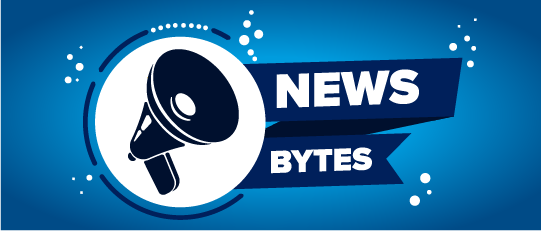For WorldatWork Members
- The Great Benefits Reset: Value, ROI Lead Strategic Influences Ahead, Workspan Magazine article
- How to Understand What Matters Most to Job Candidates, Workspan Daily Plus+ article
- Total Rewards Inventory of Programs & Practices, research
- Benefit Document Builder, tool
- Benefits Pulse: A Guide to Listening, Learning, and Leveling Up, tool
For Everyone
- Employers Say They Offer ‘Modern’ Benefits; Workers See It Differently, Workspan Daily article
- Is Your Organization Living Up to Its Employee Value Proposition? Workspan Daily article
- Cost-Benefit Analysis May Help You Maximize Your Offering Spend, Workspan Daily article
- What Gen Z and Millennials Want: How to Attract and Retain Them, Workspan Daily article
A solid, well-utilized benefits package can lead to enhanced employee engagement, retention and productivity — but according to a new report, the data you’re using to craft these total rewards offerings is likely incomplete.
Surveys and benchmarks are go-to tools, but they often look backward. As a result, HUB International’s 2025 U.S. Workforce Vitality Gap Index found that the benefits employees care about most — like flexibility and solutions that support financial well-being, including retirement planning — are often overlooked. The insurance brokerage’s report also noted that employers often miss the mark on personalization and communication.
HUB’s study was based on interviews with 1,500 workers and 150 decision-makers (HR/benefits leaders as well as finance and operations executives) at U.S. organizations with 250 or more employees.
Access a related Workspan Daily Plus+ article on this subject:
Other prominent research takeaways were:
- Nearly 3 in 4 participating workers would be more inclined to stay with their employer if benefits reflected their personal needs, but employers are generally not implementing the personalized programs needed for retention.
- Workers rank work-life balance and flexibility higher than any other benefit, including salary — yet most employer programs still lead with compensation.
- Just over 1 in 4 workers report mental health concerns, but utilization of support programs remains low — suggesting a gap in awareness, understanding or value.
As costs affiliated with total rewards (TR) rise and 72% of employers look to make changes to their benefit offerings, now is the time for HR and TR professionals to expand their field of vision since a misaligned rewards strategy is not only expensive but can lead to reduced employee engagement, increased absenteeism and turnover, and stalled recruitment.
“To keep rewards relevant, we need to look beyond our own walls,” said Alicia Scott-Wears, a content director at WorldatWork. “External benchmarking, generational trend data, and equity and inclusion analytics help us understand how different employee segments experience value. This broader lens ensures we’re not designing for the average but for the actual.”
“When rewards hit the mark, everything gets easier: You can attract the right talent, retention improves, engagement goes up and your employer brand gets stronger.”
— Andrea Goodkin, consulting practice leader, HUB International
Blend Qualitative and Quantitative Data
Listening early, intentionally and continuously is tantamount to benefit program success, according to Scott-Wears.
“While benchmarks and metrics play their role, HR professionals need to go further and embrace multisource listening strategies,” she said.
That means blending quantitative data like utilization rates with qualitative insights from focus groups, pulse surveys and even exit interviews.
“The numbers tell us what’s happening, and the stories tell us why,” Scott-Wears said.
One of the biggest mistakes TR/HR pros can make when connecting the “what” and the “why” is relying too heavily on one type of data, said Andrea Goodkin, a people and technology consulting practice leader at HUB International.
“Surveys and engagement platforms can provide the quantitative snapshot — such as the percentage of employees who want student loan support or how many value flexible work arrangements — whereas qualitative input from activities like focus groups, stay interviews, even informal feedback sessions can help uncover the why behind those numbers,” she said. “Conversations often uncover unmet needs you may not have considered.”
Goodkin’s recommendation for TR/HR pros? Layer your insights — combining employee feedback with demographic trends, usage patterns and external benchmarks — to get a true picture of what your people want, value and need.
To help with such exercises, Kim Landry, an associate research director at the Life Insurance Marketing and Research Association (LIMRA), suggested that practitioners obtain data on industry trends and competitiveness from:
- The organization’s insurance broker(s);
- The insurance carriers for specific employer benefits;
- Benefit technology partners;
- HR/TR trade associations; and,
- Third-party research firms.
Ron Neyer, Landry’s fellow associate research director at LIMRA, stated, “Be mindful of generational preferences, which impact the types of benefits that are most desirable and how the employees would like to engage [about those benefits].”
“A well-aligned rewards strategy is one of the most tangible ways HR can drive organizational performance, and that payoff compounds over time.”
— Andrea Goodkin
Clarify Your Purpose
Before you actually change or tweak a benefit, be clear about what problem you’re trying to solve, Goodkin said.
“Is it attraction, retention, engagement, equity or all of these? If you don’t define success up front, you risk making changes that feel nice but don’t move the needle,” she said.
Goodkin suggested that while traditional reward programs often lean heavily on pay, what people really want/value/need today is time, autonomy and well-being.
“When rewards hit the mark, everything gets easier: You can attract the right talent, retention improves, engagement goes up and your employer brand gets stronger,” she said. “A well-aligned rewards strategy is one of the most tangible ways HR can drive organizational performance, and that payoff compounds over time.”
Improve Your Communications
In some cases, your offerings might not be missing the mark — employees just might need more support and education to access them. Experts interviewed for this article advised TR/HR pros to obtain insights by examining utilization rates.
“If employees aren’t using a high-cost benefit, find out why,” Goodkin said. “Pair that with employee sentiment data to see if certain offerings are undervalued or misunderstood. Sometimes the fix isn’t more spending — rather, it’s smarter communication or better alignment with actual needs.”
LIMRA studies through its Benefits and Employee Attitude Tracker revealed 73% of employees want to receive benefit communications either a few times or frequently throughout the year. It reasons that employees who understand their benefits packages are more likely to appreciate them. The association’s research found 7 in 10 employees who understand both their insurance and retirement benefits extremely well are very satisfied with them.
LIMRA studies also identified that:
- Employees have a better understanding of their benefits when they receive related communication through multiple channels; and,
- Employees who are highly satisfied with their benefits are more satisfied with their jobs overall. Among workers who are very satisfied with their benefits, overall job satisfaction is 74%, versus 24% job satisfaction among workers who are dissatisfied with their benefits.
Editor’s Note: Additional Content
For more information and resources related to this article, see the pages below, which offer quick access to all WorldatWork content on these topics:
#1 Total Rewards & Comp Newsletter
Subscribe to Workspan Weekly and always get the latest news on compensation and Total Rewards delivered directly to you. Never miss another update on the newest regulations, court decisions, state laws and trends in the field.








